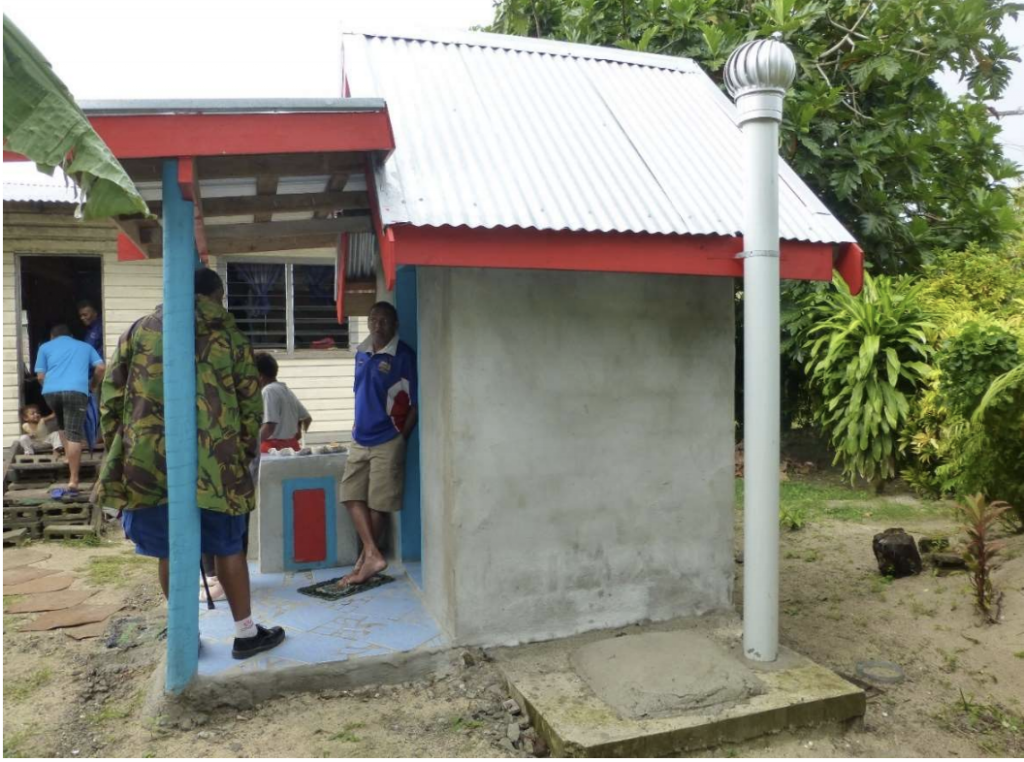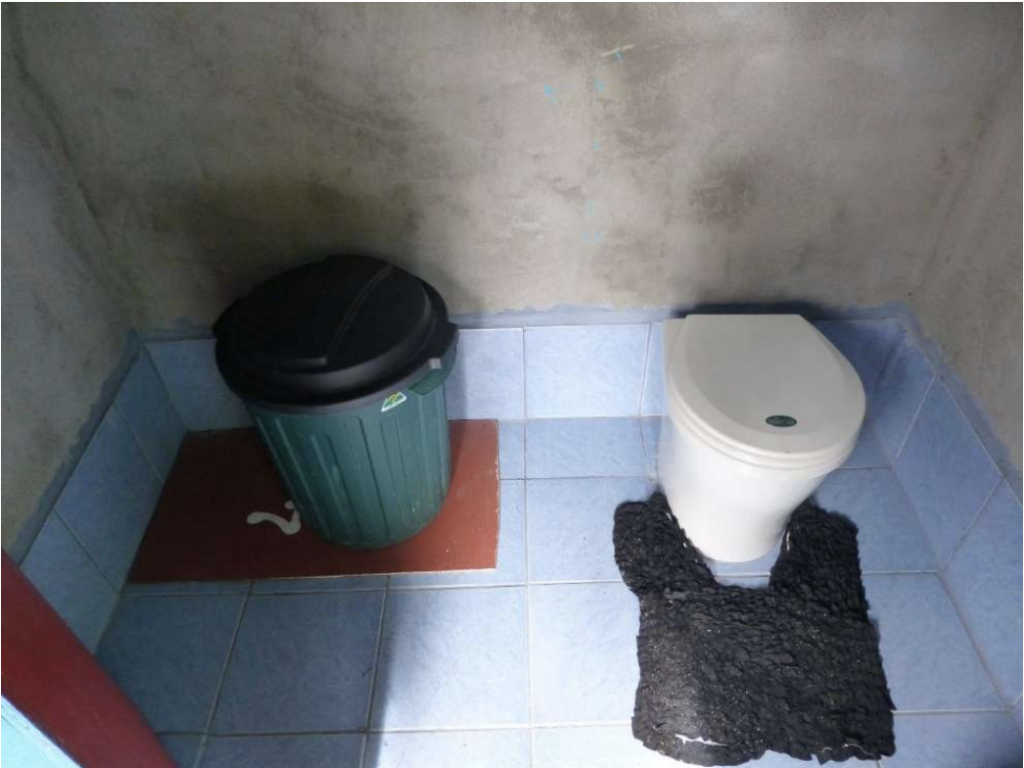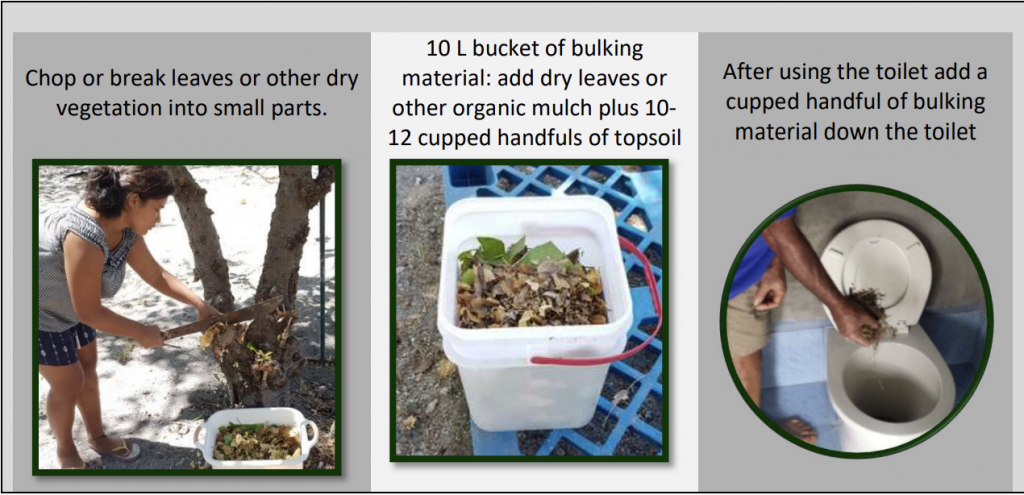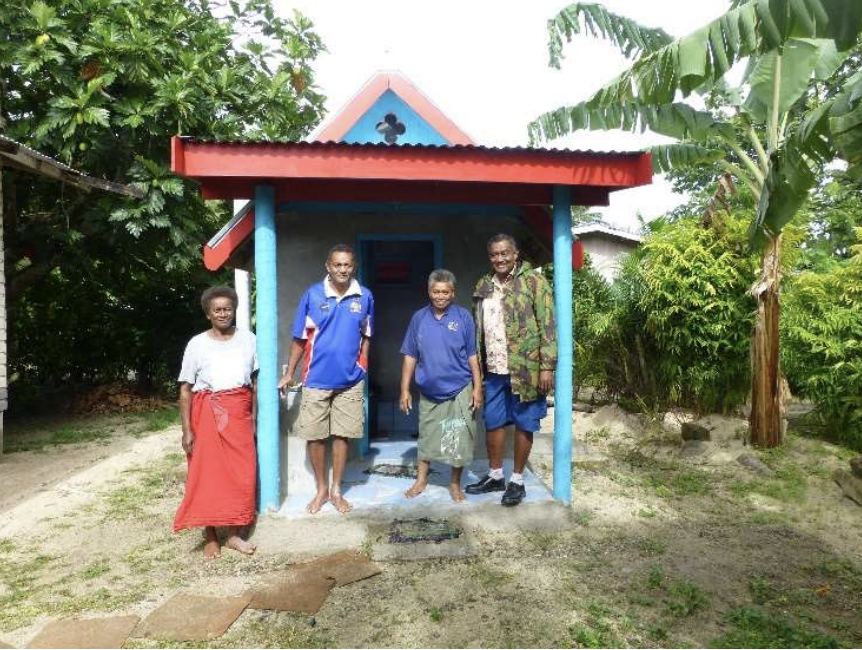Application of Innovative Wastewater Technology in Fiji
Location
Bavu and Namaqumaqua villages, Fiji
The challenge
Growing village populations have resulted in infrastructure challenges and an increase of wastewater generation along the southeastern “coral coast” of Viti Levu, Fiji. While there are some flush toilets with septic tank systems used in these areas, pervasive leaks and lack of maintenance has created problems of clogging, leaking, and surface pooling, presenting significant health risks to exposed communities and environmental risks for surface and ground waters, beaches, and marine environments. These challenges reflect the multifaceted problem of both poorly draining clay soils (surface pooling) as well as freely draining sandy soils (groundwater contamination) in Fiji.
As a result of inadequate sewage management and freshwater contamination, Fiji’s communities have experienced enteric diseases as well as typhoid outbreaks. The livelihoods and economy in Fiji are intrinsically connected to the wellbeing of the marine environment, from fishing to tourism, increasing the negative impact that sewage pollution has on communities. The Ministry of Health called for improved sanitation practices and the WASH Koro Project was initiated in 2013 to explore appropriate wastewater treatment technologies.
Actions taken
In 2013, National Institute of Water & Atmospheric Research Ltd (NIWA) began a multi-agency project investigating wastewater treatment technologies appropriate for Fijian villages. Known as the WASH Koro Project, it aimed to facilitate community-led water supply, sanitation and hygiene improvements in Fijian villages by providing tools and strategies for villages to address their own local water supply, sanitation and hygiene needs.
Collaboration with villagers and government agencies led to the installation of sanitation systems based on localized site assessments and monitoring. Guidelines and trainings were developed by the Water and Sewage Department and Ministry of Health, resulting in the formalized and approved KoroSan Onsite Household Sanitation Guidelines. One technology highlighted in these guidelines is the ecoVIP2 toilet.
The ecoVIP2 toilet is a waterless, dual-chamber ventilated latrine that promotes decomposition of waste within the pit. After each use, soil and organic matter (leaf litter) are added to the pit to absorb liquid and enhance microbial activity to promote decomposition. The structure housing each toilet is constructed to be hurricane-proof with an easily maintained toilet over two enclosed pits (one active and one reserve). A vent installed in the ceiling allows light to come in, odors to go out, and attracts any bugs away from the user. These latrines are more efficient to build and maintain than typical flushed toilets and septic tank systems, as they do not required any piped water or energy.

An installed ecoVIP2 toilet in Bavu, Fiji showing the vent pipe on the outside of the structure. Photo © Andrew Daker

Interior view of the ecoVIP2 toilet in Bavu, including a bucket of organics to add to the pit after each use. Photo © Andrew Daker
Families using the ecoVIP2 toilets were trained on how to maintain the systems, from construction to adding organics to the pit. Posters reminding users of best practices are installed in all of the ecoVIP2 toilets and communities reported satisfaction over time.

Instructions on how to prepare and use organic bulking materials in the ecoVIP2 latrines. Photo © Andrew Daker
How successful has it been?
With the assistance from Institute of Applied Sciences University of the South Pacific Suva, Fiji, NIWA monitored the performance of two ecoVIP toilets (one in Namaqumaqua and the other in Bavu) over 4-5 years. Measurements include pit volume and functionality over time. Volume was monitored with a laser while physical (pH, moisture, and ash) and chemical (carbon, nitrogen, and ammonia) characteristics were monitored through core sampling. E. coli testing was also conducted, while household interviews provided insight on satisfaction of and problems with the latrines. In the interviews, there were no complaints of odor or insects from ecoVIP toilet households. The NIWA March 2021 report, Performance of Wastewater Treatment Eco-technologies Applied in Fijian villages, provides detailed results of this monitoring.

Jeremaia Korojuta (USP) showing the tube used to collect grab samples of accumulated waste from the pits of ecoVIP2 latrines. Photo © Andrew Daker
After 4-5 years, the demonstrated effective lifespan for an ecoVIP2 pit latrine, the toilet is shifted to another pit and the first is left to further decompose aerobically, reducing the amount of solid sludge left behind and allowing each pit to be used again years later. The amount of time needed to adequately degrade the sludge prior to removal is still being monitored and safe disposal and reuse options are being explored. This information will be critical to determining how and when to remove biosolids from the ecoVIP2 pits, which will provide insight about economic and maintenance costs over time as well as the overall success of these systems.

Village residents stand outside of an ecoVIP2 pit latrine. Photo © Andrew Daker
Microbial and insect activity in the sludge, in combination with reduced moisture from regular additions of organic bulking agents, facilitate decomposition. Decomposition was observed based on pit volume, as the most heavily used latrine did not reach capacity until four years after installation. The dual pit design allows for extended periods between pit emptying and minimized opportunities for human exposure to excrement. Biosolid decomposition also significantly reduces the volume of waste, potentially allowing for multiple alternations between the two pits before emptying is needed.
Lessons Learned and Recommendations
- Site specifications are important for ensuring effectiveness of ecoVIP2 latrines. Flooding areas, slopes, and underground infrastructure are unsuitable for ecoVIP2 toilets.
- It is critical to protect the pit from any incoming water, either through precipitation or groundwater, to maintain the moisture content for decomposition.
- Investing in the overall structure and appearance of the latrine supports upkeep and functionality of the latrine. Tiled floors, secure squat plates, and handwashing facilities are examples of this and support the overall satisfaction and acceptance of these latrines.
- The addition of mulch enhances the decomposition of waste over a traditional pit latrine through carbon, aeration, and acidity.
Funding summary
New Zealand Aid Programme of the Ministry of Foreign Affairs and Trade
Lead organizations
NWIA (National Institute of Water & Atmospheric Research Ltd)
Institute of Applied Sciences water quality laboratories at the University of the South Pacific
KoroSan
Partners
Rustic Pathways (implementation in Bavu)
Water and Sewage Department of the Fijian Ministry of Infrastructure and Meteorological Services
Fijian Ministry of Health and Medical Services and Fiji Board of Health
New Zealand Aid Programme of the Ministry of Foreign Affairs and Trade
Rotary Pacific Water for Life Foundation
Resources
Performance of Wastewater Treatment Eco-technologies Applied in Fijian Villages
KoroSan: On-site Household Sanitation Guidelines for Fiji


